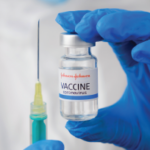Research on SLE
Researchers have discovered important details about the pathogenesis of lupus in recent years that could help lead to more effective therapy, said David Daikh, MD, PhD, president of the ACR and rheumatology chief at the San Francisco Veterans Affairs Medical Center.
In one set of recent findings, researchers showed that interferon-alpha enhances interleukin (IL) 6 production in neutrophils that are stimulated with a toll-like-receptor (TLR) 8 agonist. They also showed that neutrophils from lupus patients with active disease produced increased amounts of IL-6 and TNF-alpha in response to the TLR8 agonist.1
Investigators also highlighted how neutrophil extracellular traps (NETs) contribute to a cycle of inflammation in lupus. NETosis—the cell death process that ends with the springing of these chromatin traps to entangle bacteria—relies on the oxidation of cells. Recently, researchers have shown that these NETs in lupus contain oxidized mitochondrial DNA, which induces inflammatory cytokines.2
Other research has found oxidative stress brings about clustering of mitochondrial antiviral signaling proteins, part of the innate immune defense against viruses, which drive interferon production. This finding raises the possibility of using anti-oxidant therapy for lupus, Dr. Daikh said.3
Elsewhere, researchers recently identified three variants of the ITGAM gene, which encodes CD11b, that are linked with elevated levels of interferon in lupus. This finding suggests a direct link between CD11b activity and chronic inflammation in the disease.4
Little by little, these insights are revealing why the disease is so heterogeneous: There are many points at which the inflammatory process can malfunction. Dr. Daikh said these findings are taking lupus research in the right direction.
“As we think boldly, now, about lupus pathogenesis and where we should be putting our attention, we really have to focus on the downstream impacts of cellular activation,” Dr. Daikh said. “It’s very hard to prevent all infections. Our lupus patients will be confronted by various viral and bacterial infections, … and so we have to think downstream of those initial signals in terms of modulating activating signals in the adaptive response.
“The ultimate goal would be to be able to tailor specific targeted therapy with individuals who match the heterogeneity that we see—for example, patients who have impaired CD11b function—to provide an effective target for a subset of patients.”
Thomas R. Collins is a freelance writer living in South Florida.
References
- Zimmermann M, Arruda-Silva F, Bianchetto-Aguilera F, et al. IFNα enhances the production of IL-6 by human neutrophils activated via TLR8. Sci Rep. 2016 Jan 21;6:19674.
- Lood D, Blanco LP, Purmalek MM, et al. Neutrophil extracellular traps enriched in oxidized mitochondrial DNA are interferogenic and contribute to lupus-like disease. Nat Med. 2016 Feb;22(2):146–153.
- Buskiewicz I, Montgomery T, Yasewicz E, et al. Reactive oxygen species induce virus-independent MAVS oligomerization in systemic lupus erythematosus. Sci Signal. 2016 Nov 29; 9(456):ra115.
- Faridi MH, Khan SQ, Zhao W, et al. CD11b activation suppresses TLR-dependent inflammation and autoimmunity in systemic lupus erythematosus. J Clin Invest. 2017 Apr 3;127(4):1271–1283.


